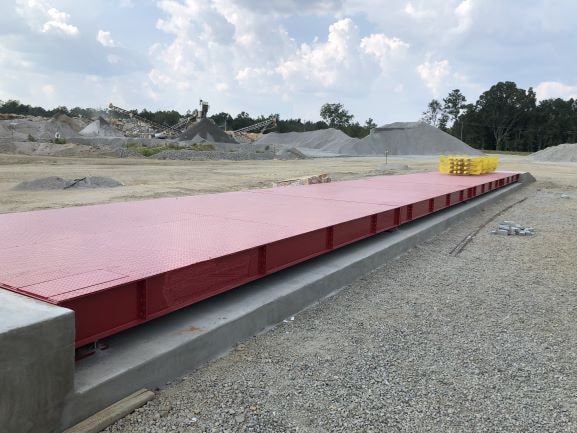Like any equipment available for purchase truck scales come in varying prices. So, what’s the difference between the high-priced scale and the more economical? Read on to learn what. Always remember that you get what you pay for. Bottom-line we only recommend truck scales from top -quality manufacturers. Although there are folks who swear by one truck scale brand or the other; this is akin to Chevy vs Ford. At the end of the day both Chevy and Ford make good quality pickup trucks.
Here is what will impact the cost of your new truck scale:
1) Width & Length:
Bigger isn’t better when it comes to pricing of a truck scale. As one would expect the longer and wider the truck scale the more expensive it will be. The main reason is all that extra steel that goes into a larger scale. Keep in mind the standard truck scale size in the US is 70ft long and 11ft wide. But truck scales can be as short as 25ft long all the way to 160ft+. As the length increases that also means more scale modules are required and therefore more load cells. The width of the scale is often overlooked. From a cost perspective a wide scale drives not only the scale price up but also the shipping. Shipping a 13 ft wide scale can cost 2 – 2.5 times the amount of standard 11ft wide scale. Why is that? Permitting and escort vehicles for multiple state due to the wide load increase the cost.
2) Deck Type:
Whether you choose a steel deck or concrete deck truck scale will also impact pricing. Steel decks are more expensive upfront. Concrete deck truck scales are less expensive upfront, but once you include the cost of concrete for the deck, the prices become similar. If you are looking to reduce your cost and are able to pour your own concrete, then a concrete deck truck scale will save you money. If you plan to have a scale dealer complete a turn-key installation, then the price for either deck type will be the same generally.
3) Load Cell Type:
The total cost ownership of a truck scale over it’s lifetime will always come down to the load cells. In today’s market there are three types of load cells available: analog, digital, and hydraulic. You can read more here on the technical differences of each. When it comes to price analog are most economical while hydraulic most expensive. Keep in mind that when it comes time to replace a load cell, there are numerous load cell manufacturers for analog load cells. This leads to much lower prices. For digital and hydraulic load cells you will be required to buy an OEM replacement. This means the manufacturer has complete pricing power and results in higher prices. Now, keep in mind we are only discussing pricing, there are many benefits to digital and hydraulic load cells. You should understand that the upfront savings of an analog load cell system can quickly be eroded overtime as they often require more frequent replacement.
4) Data Connectivity:
Connecting your scale and the data it produces to other devices impacts pricing. The scale indicator which is really the brains of the scale is where that connectivity will take place. Connecting your scale to a computer, PLC, HMI, etc, is always doable. Key to pricing is what type connection is required. Whether it be serial, TCP/IP, 4-20Ma, Ethernet, Profinet, Modbus, etc. the cost will vary significantly. All scale indicators will offer basic serial streaming as a standard option. It is when you move into the proprietary data transfer protocols like Profinet, Modbus, etc. where prices dramatically increase. Bottom-line, know where you need to send your scale data and what way its need to be sent.
5) Steel Content:
How much physical steel is used to construct the truck scale also drives prices. Many manufacturers will tout the amount of steel that they use in their scale. This is a good proxy for the quality of the truck scale. All reputable US made truck scales from the top 5 largest manufacturers use loads of steel in their scales. The key here is to look out for cheap foreign made scales with minimal steel. Often these imported truck scales will only have 60% of the steel content of a US made counterpart. Don’t be fooled by these imported truck scales, they will not last and often times cannot even pass state inspections right out of the box.





